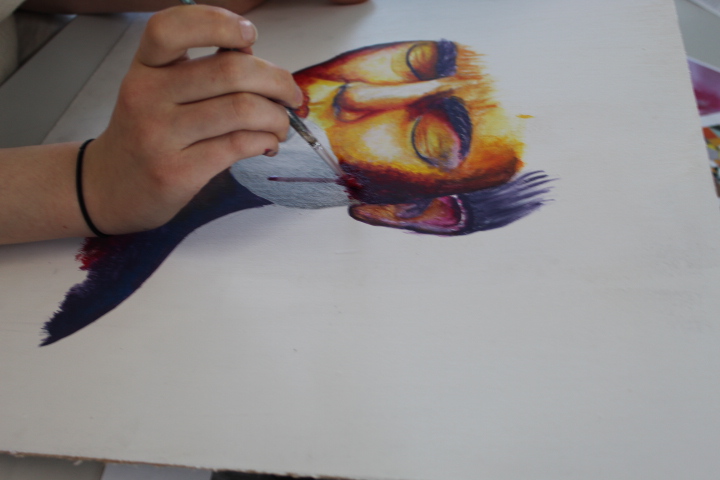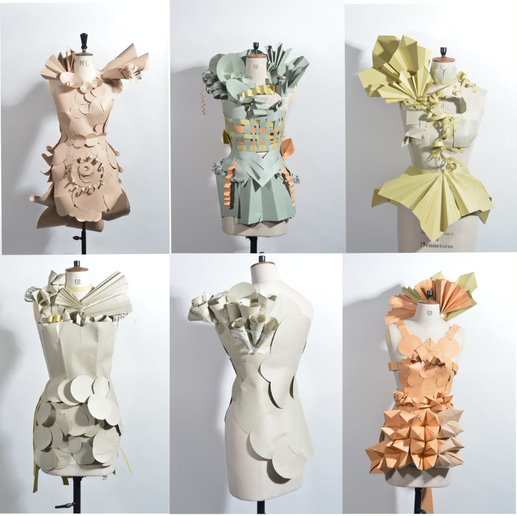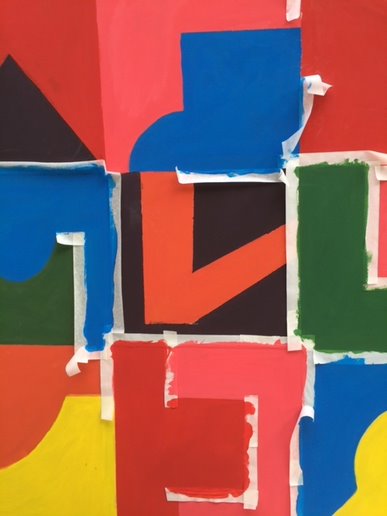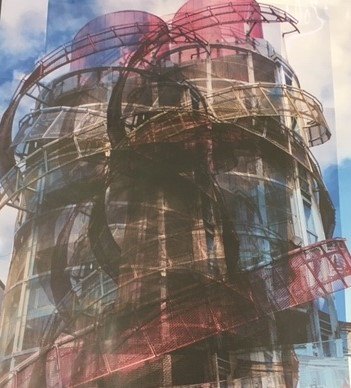“Every child is an artist. The problem is how to remain an artist once we grow up” - Pablo Picasso

Curriculum Intent
The Art, Design and Technology curriculum is designed to allow pupils to gain a wide appreciation of both historical and contemporary artists and designers and the innovative and complex design challenges faced in the modern world . The aim of the department is for students to gain an appreciation of art and design technology and the role it plays in society. Using the quote from Bob and Roberta Smith “Art makes children powerful” the department aims to provide pupils with a creative, passionate and valued voice.
At KS4 pupils are provided with in-depth knowledge of skills, tools and processes in three-dimensional making, fine art, photography and textiles design. KS4 pupils have a lively program of curriculum enrichment with trips to Tate Liverpool, the Baltic Centre of contemporary art and Yorkshire Sculpture Park alongside visits to local art and architecture sites such as Penshaw Monument and The Angel of the North and visits to local art educational providers for creative workshops (CCAD) and local Engineering companies taking part in real world activities in the various sectors linking to future careers.
At KS3 the three-year curriculum covers design, illustration, printmaking, ceramics, 3D modelling, photography, graphics, fashion illustration, pattern design, drawing and painting. Manufacturing theory and techniques including timbers, polymers and metals. Alongside this students get the opportunity to work in Photoshop, use of darkroom facilities, glass making, 2d design and experience using the laser cutter.
Key Stage 3 Curriculum
The aims of the national curriculum for Art and DT are covered and extended on in our planning.
- Investigate/Research – Understand developments in design and technology – social impacts on design and their Contribution to creativity, wealth and culture. How others have responded to themes and an understanding of purpose and meaning behind works of art
- Explore/Design - Produce creative work using a wide range of tools equipment and technology. Problem Solving skills to complex STEM issues.
- Record/Manufacture – record ideas and insights through drawing, photography, written annotation, prototypes, modelling and making.
- Present/Evaluate – Meaningful and imaginative ideas that answer a brief and follow intentions. Show an understanding of competency using tools and materials to achieve the desired outcome. Analysing and evaluating end products and responses
Key Stage 4 Curriculum
At Key Stage 4 the department offers a suite of creative qualifications in Fine Art, Photography, Three Dimensional Design and Textile Design. Each qualification follows a similar format of assessment.
Exam Board: AQA
Syllabus: Fine Art 8202, Textiles 8204, Three Dimensional Design 8204, Photography 8206
- Component 1: Portfolio (8201/C) 60%
- Component 2: Externally set assignment (8201/X) 40%
Art and Design is a vibrant and dynamic subject to study. Students develop knowledge and understanding during the course through a variety of learning experiences and approaches, including working from a source. Key art and design skills are demonstrated through the development, refinement, recording, realisation and presentation of ideas through a portfolio and by responding to an externally set assignment.
Each GCSE is made up of two components.
Component 1: Portfolio – 60% of GCSE
Pupils are required to submit a portfolio that comprises a sustained project evidencing the journey from initial engagement to the realisation of intentions and a selection of further work which represents their course of study.
Component 2: Externally set assignment – 40% of GCSE
Pupils respond to their chosen starting point from an externally set assignment paper relating to a chosen title. A preparatory period is given followed by 10 hours of supervised time.
GCSE Fine Art
Fine art practise is the exploration of an idea, the process of conveying an experience or responding to a theme. The exciting part of Fine art is experiencing the wide range of media and processes as you develop your ideas. You will work in a creative environment and become an independent artist.
In Fine art, pupils will develop knowledge and understanding through a variety of learning experiences and approaches whilst developing the skills to explore, create and communicate your own ideas.
The course consists of 3 projects under the titles:
- Art Forms in the Ocean - Painting
- Art Forms in the Ocean - Print
- Natural forms - Ceramics
Pupils will also complete a further project set by the exam board released in the January of Year 11
Pupils will have the opportunity to work with a variety of techniques and processes appropriate to realising your intentions, for example, mark-making, monoprint, collagraph, assemblage, carving, photography, film and video and digital working methods. Pupils will demonstrate the ability to use a range of media and materials, appropriate to your intentions, for example, pencil, watercolour, acrylic, clay, pen and ink, charcoal, pastels, and digital imagery.
GCSE Textile Design
Textile design is the creation of designs and products for woven, knitted, stitched, printed or decorative textiles that might have a functional or non-functional purpose. Pupils will get the opportunity to explore Fashion and Textiles design through the sampling and construction of Textile products, techniques and processes. Pupils will develop sector-specific knowledge and skills in a practical learning environment. In both the academic and vocational route you will generate a portfolio evidencing the journey from initial ideas to the realisation of intentions. The course provides pupils with a variety of learning experiences and approaches whilst developing the skills to explore, create and communicate their own ideas.
The course consists of 3 projects under the titles:
- Fauna
- Brilliant Botanicals
- Growth and Decay
Pupils will also complete a further project set by the exam board released in the January of Year 11
 GCSE Three Dimensional Design
GCSE Three Dimensional Design
Three-dimensional design is all about the design, prototyping and modelling or making of functional and aesthetic products, objects, and environments. An exciting part of 3D design is the model making and all the different techniques and technology you use along the way in order to create them. Making prototypes of your design ideas and thought processes is a practical and hands-on way to problem solve design briefs. In this course, pupils will develop sector-specific knowledge and skills in a practical learning environment. Pupils will generate a portfolio evidencing the journey from your initial ideas to the realisation of your intentions. This portfolio is worth 60% of your qualification. The course will provide pupils with a variety of learning experiences and approaches whilst developing the skills to explore, create and communicate pupils own ideas.
The course consists of 3 projects under the titles:
- Architectural Structures
- Sculpture and Space
- Kinetic Shapes
Pupils will also complete a further project set by the exam board released in the January of Year 11
Pupils will have the opportunity to work with a variety of media, materials and tools such as specialist drawing materials, 2D design, Photoshop, Laser cutter, workshop tools, wood, metal, plaster, concrete, acrylic, ceramic and glass.
GCSE Photography
Photography is the practice of producing images using light-sensitive materials such as photographic film, or digital methods of development and production to create static or moving images. In this subject pupils will develop knowledge and understanding of the history of Photography by experimenting with traditional and non-digital Photography practices. This will include Photograms, Pinhole cameras and Cyanotypes as well as developing pupils' own photographs in our dedicated Photography Dark Room. Lessons will move into the digital age by developing skills in Photoshop using digital media in one of our computer suites.
The course consists of 3 projects under the titles:
- Manipulation Before Digital
- Layers of Light
- Renewal and Decay
Pupils will also complete a further project set by the exam board released in the January of Year 11
We also have a variety of digital and SLR cameras for pupils to use and borrow inside and outside of school. You will develop a professional portfolio of work through a variety of learning experiences and approaches whilst developing the skills to explore, create and communicate your own ideas and personal response.
Skills Developed
- Being creative and producing artwork that reflects personal interests in Art and Design.
- Exploring and creating work associated with two areas of study from either; Fine art, Graphic communication, Textile design, Photography and Three- dimensional design.
- Understanding sources inspire the development of ideas.
- Recording ideas and observations visually through drawing, photography and written annotation.
- Experimenting with media, materials, techniques and processes.
- Applying an understanding of relevant practices in the creative and cultural industries to artwork.
Progression Routes
GCSE Art and Design qualifications provide a strong foundation for further study at AS and A-level as well as vocational pathways including BTEC Art and apprenticeships, in subjects such as Fine Art, Photography, Textile Design and Three Dimensional Design, as a well routes in to employment in the creative industries.
Future Careers
Fine Art: Careers directly related to Fine art include: Exhibition designer, Fine artist, working within Education, Illustrator, Museum/gallery curator or Printmaker. Careers where fine art would be useful include: Art therapist, Arts administrator, Commercial art gallery manager, Interior and spatial designer, Museum/gallery exhibitions officer or Multimedia programmer. The great thing about Fine art is the skills are transferable in the workplace; the subject strengthens your creativity and problem-solving.
Textile Design: Careers directly related to Textile design include: Fashion designer, Textile designer, print designer, Fashion Illustrator, Interior designer, Clothing/textile technologist, Colour technologist, Careers where Textile design would be useful include: Graphic designer, Printmaker, Product designer, Fashion journalism, Retail buyer, Visual merchandiser and working within education.
Photography: Careers directly related photography include: Graphic designer, Magazine features editor, Medical illustrator, Photographer, Press photographer, Television camera operator, Wedding Photographer, Photojournalist. Police Photographer, Commercial photographer, Food photographer, Landscape photographer. Careers where photography would be useful include: Advertising art director, Film/video editor, Media planner, Working within education, Visual merchandiser, Web designer, Illustrator, Magazine editor, Designer, Working in galleries and museums, Film director, Working in digital media, Art curator, Art historian.
Three Dimensional Design: Careers directly related to Three-dimensional design include: Exhibition designer, Furniture designer, Industrial/product designer, Architect, Interior and spatial designer. Careers where Three-dimensional design would be useful include: Advertising art director, Graphic designer, Materials engineer, Product manager, Production designer, theatre/television/film and Purchasing manager.
Art, Fine Art and Photography
.png)